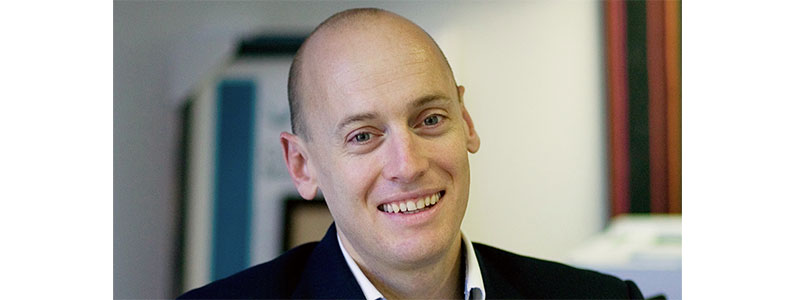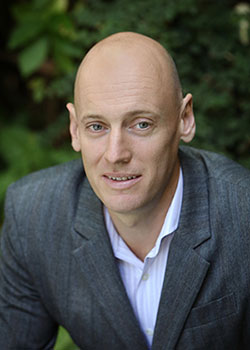
Dr Gavin Sandercoe is the whole package. Not only does he have his private practice at Norwest Plastic and Cosmetic Surgery in Sydney, he travels regularly overseas to attend Plastic and Cosmetic conferences and events, donates his time to less fortunate countries to perform necessary procedures on patients otherwise unable to access surgery, and is also involved with training and developing courses for the next generation of plastic surgeons. This sounds exhausting and is just his work life! We managed to pin Dr Gavin Sandercoe down for long enough to ask him some questions about not just his career, but his life outside of work too.
Tell us a little about yourself… where did you grow up?
I grew up in the Hills Area in North-Western Sydney, not far from where my practice is at Bella Vista. I went to the local public school, and was lucky enough to be chosen to attend a selective school. I played AFL on weekends and rugby union at school (neither very well) and was involved in the Cadets at High School.
What is something interesting about you that most people wouldn’t know?
I was a Scout for most of my childhood, an experience that provided me with the skills and confidence to attack other challenges in life. I still have my parent’s old family car that I learned to drive in – a Holden Kingswood with a bench seat. My old Scout friends remember the car as the car we used to bundle everyone into to take caving and rock climbing. Nowadays, it has a well-deserved reputation of being the ‘world’s most expensive Kingswood’ as I have rebuilt it into a street machine of sorts, and never gets dirty or driven in the rain!
You are an active person outside of your plastic surgery work, participating in triathlons and Ironman events among other physical activities. How do you find the time to fit all of that in, and how important is it to complementing your career as a plastic surgeon?
I have minimised the travel in my life – my home is close to my office and to the private hospital that I operate from. I’ve learned to embrace the early rise to train. It also means an early bedtime most nights. Especially when training for Ironman events, I need to rely on a strong support network – my wife and parents really help out with the kids & the general running of a household. Occasionally I train with my wife & kids – many of my triathlete friends are used to my running or riding with my kids in a double pram. I view my interest in endurance sports as my attempt to keep my life balanced – I could work harder and earn more, but I would enjoy life less. Exercise is a way for me to blow off steam, so I look forward to training. Your health (and body shape) is something that you cannot buy – it is earned through work and persistence.
Where did you study?
My undergraduate degree was at The University of Sydney. My post graduate training was all over Sydney.
Before specialising in plastic surgery, you also trained in cardiothoracic and general surgery. Did you always have your sights on becoming a plastic surgeon, and what was it about plastic surgery that appealed to you over other specialties?
Initially I wanted to do trauma surgery. I liked the thrill of being involved in the immediate care of the trauma patient. I was strongly discouraged from this career path by the surgeons that I worked with as a junior registrar. Possibly as a result of my trauma interest, I had a difficult time being accepted by General Surgeons and missed out on selection for several years. During this time of disappointment, one of my early mentors (a General Surgeon) suggested that I should try to do some Plastic Surgery. He thought that I had the aptitude for the specialty, and even if I did not want to pursue it as a career, it would give me additional skills and provide a wider exposure that I could utilise as a surgeon. As it turned out, I loved plastic surgery and the role I could play in reconstruction after trauma. Maybe due to the inherent ability, or due to enjoying being a registrar again, I was recognised as a better candidate by the Plastic Surgery Selection Board.

What has been your biggest career milestone to date?
Completing Plastic Surgery training is the big ‘OMG thank you’ moment. I was also very lucky to be selected to be an International Fellow at Harborview Trauma Hospital in Seattle.
What is the most rewarding part of your job?
Looking after great patients, and seeing them gain self-confidence after cosmetic or reconstructive surgery.
What advice would you give someone looking to undergo major cosmetic surgery?
Do your research. Look for a surgeon on the ASPS website that is close enough to you that follow-up appointments are easy for you. Get your GP’s input on local surgeons that have a good reputation. Talk to other patients. Not just the 99% that go well, but also the 1% that have issues – you want to be certain that your surgeon will look after you when things are not so good.
What advice would you give someone who is under the age of 18 and looking to undergo cosmetic surgery?
Understand that your body may still be growing and that your results may not be permanent. For this reason, many surgeons will want you to see them with your parents.
Do you provide any support for patients after surgery?
I see my patients daily whilst they are in hospital. A normal follow up for most patients is 1 week, 3 weeks, 3 months, 6 months, and 12 months.
You have experience performing surgery in less developed countries such as Nepal. How do these international locations compare with plastic surgery in Australia, and what differences do you see in the attitudes of plastic surgery between the differing cultures?
Nepal is a developing country with many third world issues. I have worked several times with a unit in Kathmandu that provides free care to the local patients. They do the best that they can within their facilities. Although they have an operating microscope (I believe donated by Interplast Australia), they lack basic things like dressings and drugs. The patient’s families need to provide many of the consumables – things that most of us just expect to be provided with. The unit does a lot of cleft lip and palate work – in numbers that most Australian surgeons would never see in a lifetime. They also perform a lot of burns surgery. The patients within this unit are just grateful to get healed up and home.
You have a focus and particular interest in reconstructive facial surgery. What technology and other advancements have you seen that improve the quality and outcomes of reconstructive surgeries?
3D printing is helping create more accurate moulds for facial reconstruction, and the ability to model reconstruction plates on CT scans is a major advancement. The use of intra-operative CT scanning to assess the position of facial bones is a great tool, and I would hope this becomes the standard of care in units that do complex facial trauma.
How important do you think it is to have good quality staff around you when performing any procedures?
Staff that know the surgeon’s preferences, the instruments and procedure sequencing make any operation run more smoothly. This makes everyone’s stress levels lower, and means there is less likelihood of mistakes and frustrations causing bad decisions.
Why do you think it is important for anyone considering plastic surgery to have it performed in Australia, as opposed to travelling overseas to have it done?
Firstly, it is difficult to compare surgical training and facilities between countries. Australian surgeons are well regarded across the world as being particularly well trained. Surgeons from other countries are less likely to have had such rigorous training and testing. The facilities can be very different (as I can attest to from having operated in other countries) and this impacts on cleanliness and risk of infection.
Most Specialist Plastic Surgeons have seen patients from overseas that they have needed to help out. These are often patients who looked ok when they were discharged a few days after their procedure only to have things go pear shaped later on. I have recently seen a nurse who has made the same mistake! Most Australian Surgeons follow up their patients for a year after an operation, something that is just not feasible for an overseas surgeon.
The cost savings are often less dramatic then they initially seem. It seems ridiculous that consumers make decisions on buying a car or TV that include considering the warranty period, but some patients are prepared to have an operation on themselves without adequate follow up!!
What is the most interesting/memorable surgery you have performed to date?
Late corrections of facial trauma or congenital bony abnormalities are particularly satisfying. They are technically difficult procedures, and I get a lot of satisfaction from correcting a patient’s facial appearance. I have worked hard to develop a good support team of other specialists around me (dentists, ophthalmologists, ENT surgeons) whom are happy to be involved with the complex planning and care that these patients require.
For more information on Dr Gavin Sandercoe click here.
